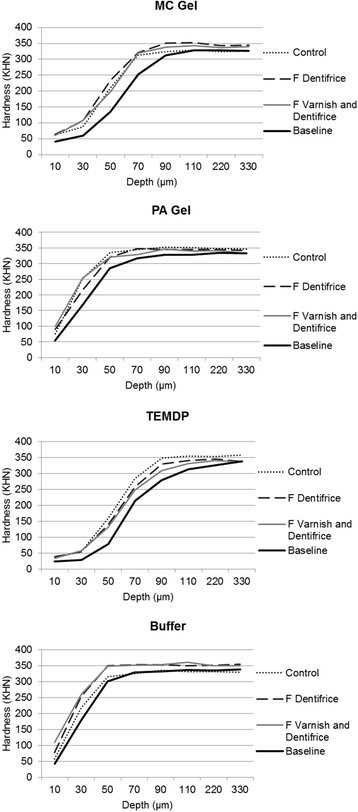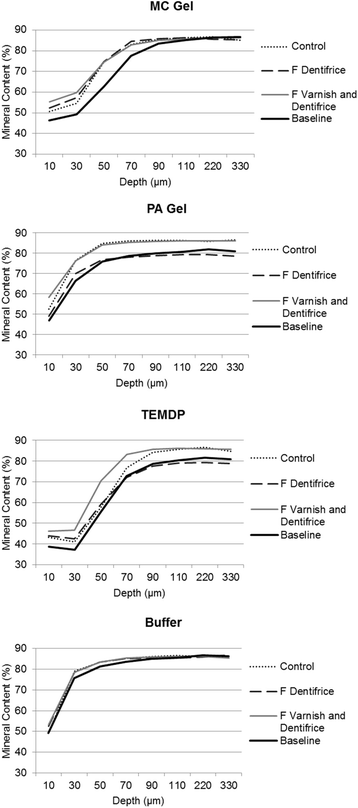In situ remineralisation response of different artificial caries-like enamel lesions to home-care and professional fluoride treatments
- PMID: 26746199
- PMCID: PMC4706651
- DOI: 10.1186/s12903-016-0160-9
In situ remineralisation response of different artificial caries-like enamel lesions to home-care and professional fluoride treatments
Abstract
Background: Artificial lesions produced by different protocols might directly influence the response to different remineralising treatments. This study compared the response of different artificial caries-like enamel lesions to home-care and professional fluoride based-remineralising treatments in situ.
Methods: The tested demineralising protocols were methylcellulose- MC gel, polyacrylic acid - PA gel, tetraethyl methylene diphosphanate - TEMDP solution, and acetate- Buffer solution. The lesions were remineralised using an in situ model, following a crossover and double blind design. Twelve subjects wore intra-oral appliances during 3 phases (3 d each): control (C) (saliva); home-care F(-) treatment (FD) (1,100 ppm F(-) dentifrice, 2x1 min/day); and professional (FVD) (22,600 ppm F(-) varnish) plus FD. The de-remineralisation was measured by transverse microradiography-TMR and hardness (surface hardness/cross-sectional hardness, SH/CSH, respectively).
Results: For SH, lesions produced by PA gel were the only one showing significant differences among the remineralising treatments (C x FD x FVD); while the TEMDP lesion were not responsive to any fluoride treatment (for both SH/CSH). For TMR, there were no differences among the remineralising treatments, regardless of the type of lesion. Generally, the most responsive lesions to fluoride were the less demineralised lesions (considering hardness: PA gel and Buffer).
Conclusions: The type of lesion has influence on the surface remineralisation degree induced by home-care and professional fluoride treatments using this in situ model.
Figures


References
-
- Magalhães AC, Moron BM, Comar LP, Wiegand A, Buchalla W, Buzalaf MAR. Comparison of Cross-Sectional Hardness and Transverse Microradiography of Artificial Carious Enamel Lesions Induced by Different Demineralising Solutions and Gels. Caries Research. 2009;43(6):474–83. doi: 10.1159/000264685. - DOI - PubMed
Publication types
MeSH terms
Substances
LinkOut - more resources
Full Text Sources
Other Literature Sources

